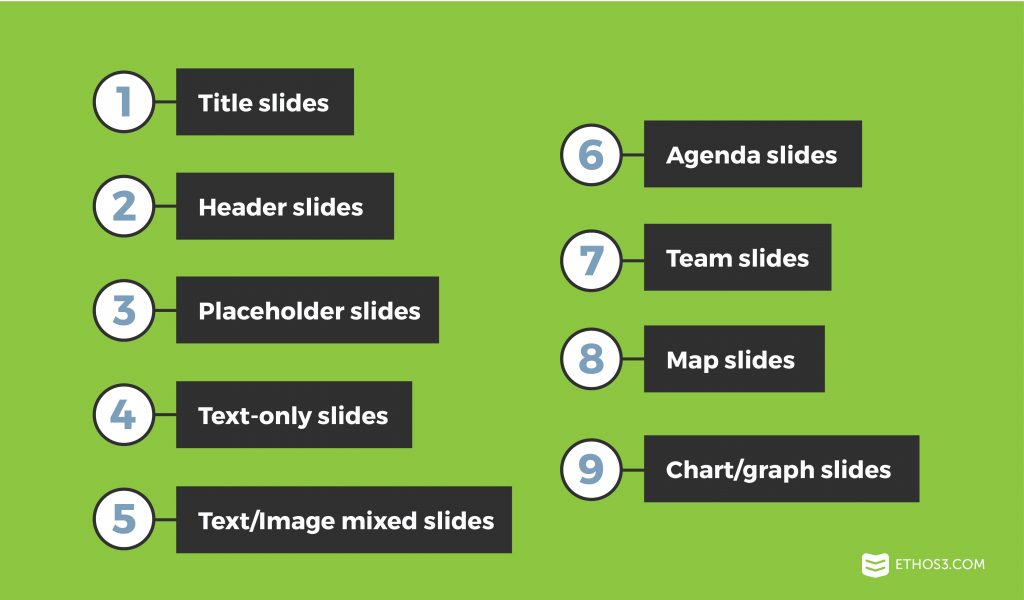Our designers face a challenge every time they create a PowerPoint template: what slide layouts are essential for a client that they don’t know anything about? Will they need map slides, agenda slides, and a special slide to feature links at the end? If our team used slide layouts from over ten years of experience in the presentation industry, the template might become a monster. It might never end.
Luckily, we know what’s essential.
There are slide layouts that we encounter which repeat themselves no matter which industry, client, message, or story conveyed. These are the slides with enough flexibility to be used for anything, no matter how complex or minimal.
Before you purchase a template, browse through the layouts to ensure that these basics are well-covered, with multiple versions of each if possible.

The Checklist:
1. Title slides – You may wish for two versions of a title slide, in order to bookend the presentation with similar yet unique styles.
2. Header slides – These should come in as many colors as available within the palette of the deck.
3. Video and image placeholder slides – These should include a designed “frame” in order to indicate that they are still part of the template’s style.
4. Text-only slides – These can encompass either bullet point or paragraph-format style slides.
5. Text and image mixed slides – There should be a large quantity of these slides, with different layouts to add variety throughout.
6. Agenda slides – These should have a more sophisticated look than the text-only slides, with a bold header or even a numerical list.
7. Team slides – A good layout will include plenty of room for headshots with a short piece of descriptive text beneath it. Even if you have a thousand team members that need to be featured, you can always copy this slide to create multiples.
8. Map slides – You’d be surprised how many presentations we design that include a map of the globe, to indicate a spread of something or company locations. Even if you don’t think you’ll need it…you probably will.
9. Chart and graph slides – Templates should come equipped with multiple kinds of chart and graph slides, each with their own style that elevates the boring PowerPoint default design.
What’s missing?
Are we suggesting that there are only nine slides that each template needs? Absolutely not! Templates should be equipped like a toolbox, with drill bits for every kind of job. Different layouts means that your team has room for creativity, especially for the meat of your content which will repeat text/image slides over and over.
We aren’t going to put out an exact number of how many slides a PowerPoint template should have, just know that we provide 50 in our own templates. As you search for a deck to meet your own needs, just remember: bigger is better, but only if it looks good.
Looking for more resources about templates and how to use them to your full advantage? Check out these related posts!
3 Ways to Use Presentation Templates to Your Advantage
